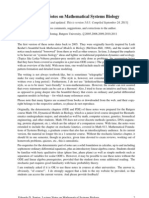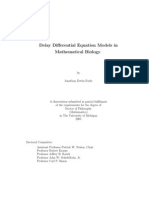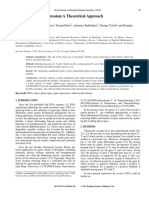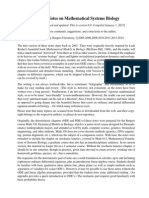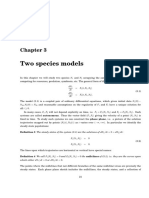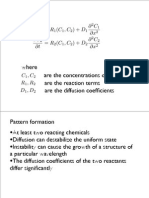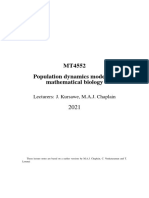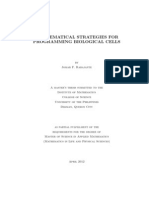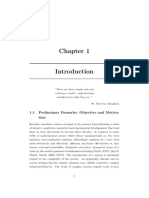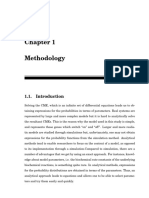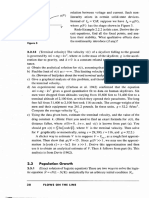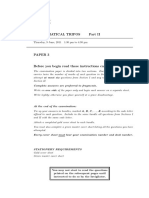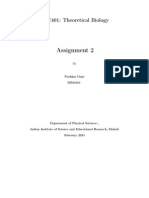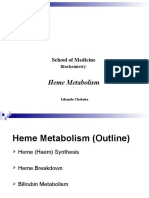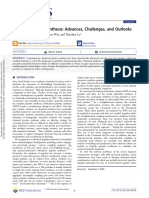0% found this document useful (0 votes)
18 views6 pagesLecture Notes 3-2
The document discusses mathematical models for gene regulatory networks, focusing on Goodwin's model and self-regulating gene networks. It explores feedback mechanisms in gene expression, bistability, and stochastic kinetics in single genes. Additionally, it examines a gene network functioning as a clock through mutual repression among transcription factors.
Uploaded by
cepem13540Copyright
© © All Rights Reserved
We take content rights seriously. If you suspect this is your content, claim it here.
Available Formats
Download as PDF, TXT or read online on Scribd
0% found this document useful (0 votes)
18 views6 pagesLecture Notes 3-2
The document discusses mathematical models for gene regulatory networks, focusing on Goodwin's model and self-regulating gene networks. It explores feedback mechanisms in gene expression, bistability, and stochastic kinetics in single genes. Additionally, it examines a gene network functioning as a clock through mutual repression among transcription factors.
Uploaded by
cepem13540Copyright
© © All Rights Reserved
We take content rights seriously. If you suspect this is your content, claim it here.
Available Formats
Download as PDF, TXT or read online on Scribd
/ 6




